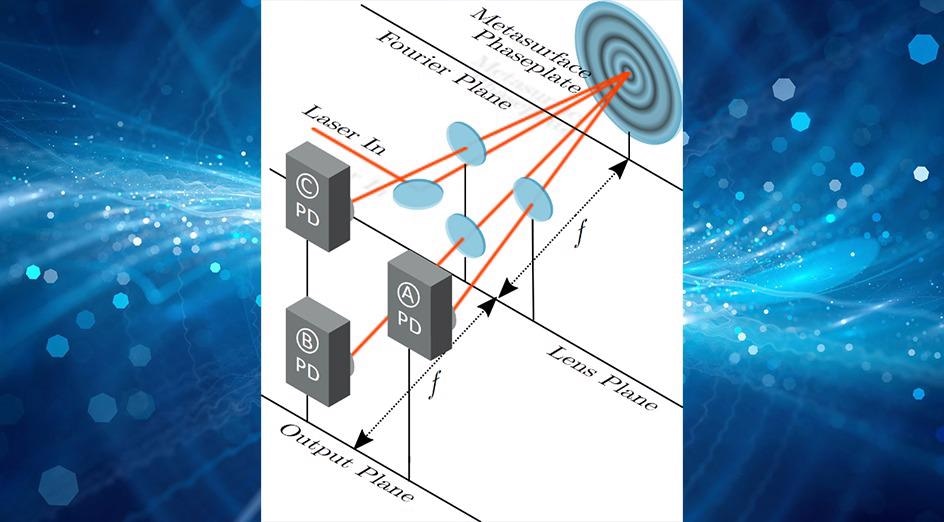Reviewed by Alex SmithMay 31 2022
The University of Western Australia’s gravitational-wave physicists have led the creation of a new laser mode sensor with unparalleled precision that will be used to investigate the interiors of neutron stars and test limits of general relativity.
 A schematic of the apparatus used by the researchers. ‘f’ is the focal length of the lens. Image Credit: The University Of Western Australia.
A schematic of the apparatus used by the researchers. ‘f’ is the focal length of the lens. Image Credit: The University Of Western Australia.
Dr. Aaron Jones, a Research Associate at UWA’s Centre of Excellence for Gravitational Wave Discovery (OzGrav-UWA), said the university coordinated a global collaboration of gravitational wave, metasurface and photonics experts to pioneer a new way to measure light structures called “eigenmodes.”
Gravitational wave detectors like LIGO, Virgo, and KAGRA store enormous amount of optical power, and several pairs of mirrors are used to increase the amount of laser light stored along the massive arms of the detector.
Dr. Aaron Jones, Research Associate, Centre of Excellence for Gravitational Wave Discovery, The University Of Western Australia
“However, each of these pairs has small distortions that scatter light away from the perfect shape of the laser beam which can cause excess noise in the detector, limiting sensitivity and taking the detector offline.”
“We wanted to test an idea that would let us zoom in on the laser beam and look for the small ‘wiggles’ in power that can limit the detectors’ sensitivity,” Dr. Jones added.
A similar topic, according to Dr. Jones, is being investigated in the telecoms business, where experts are looking into using several eigenmodes to transfer more data along optical fibers.
Telecoms scientists have developed a way to measure the eigenmodes using a simple apparatus, but it’s not sensitive enough for our purposes. We had the idea to use a metasurface—an ultra-thin surface with a special pattern encoded in a sub-wavelength size—and reached out to collaborators who could help us make one.
Dr. Aaron Jones, Research Associate, Centre of Excellence for Gravitational Wave Discovery, The University Of Western Australia
The team’s real evidence device was 1,000 times more sensitive than the initial apparatus constructed by telecoms scientists, and the researchers will now try to adapt their findings into gravitational wave sensors.
Associate Professor Chunnong Zhao, OzGrav-UWA Chief Investigator, said the breakthrough is another step forward towards identifying and understanding the data transported by gravitational waves, allowing researchers to view the universe in innovative ways.
Solving the mode sensing problem in future gravitational wave detectors is essential if we are to understand the insides of neutron stars and further our observation of the universe in a way never before possible.
Chunnong Zhao, Associate Professor, Centre of Excellence for Gravitational Wave Discovery, The University Of Western Australia
Journal Reference:
Jones, A. W., et al. (2022) Metasurface Enhanced Spatial Mode Decomposition. Physical Review. doi.org/10.48550/arXiv.2109.04663.